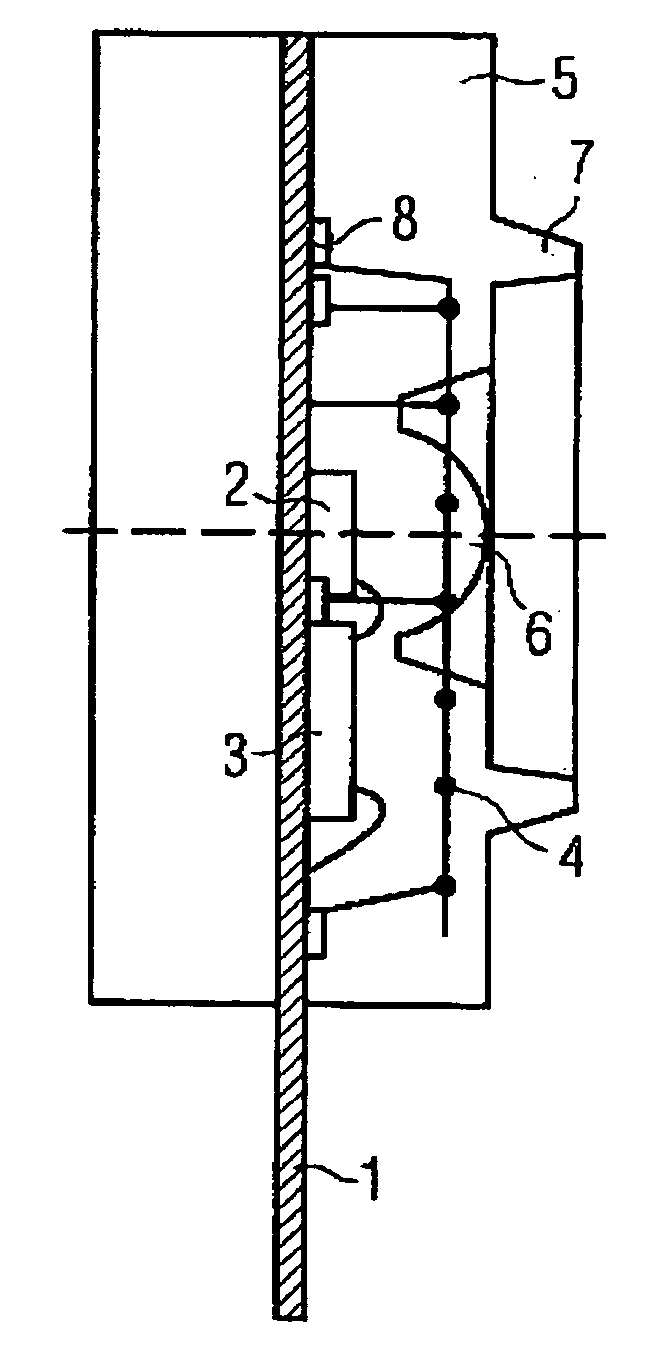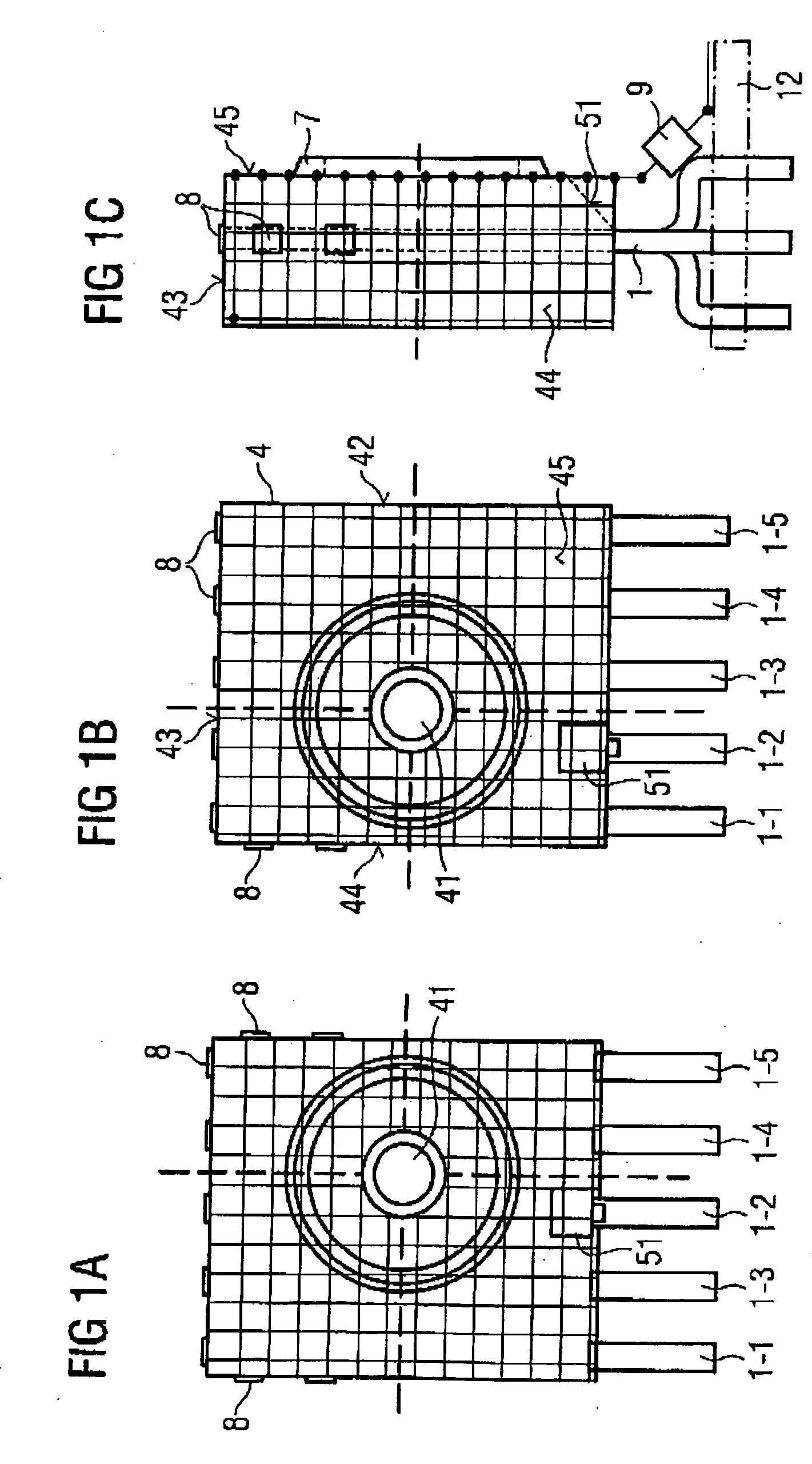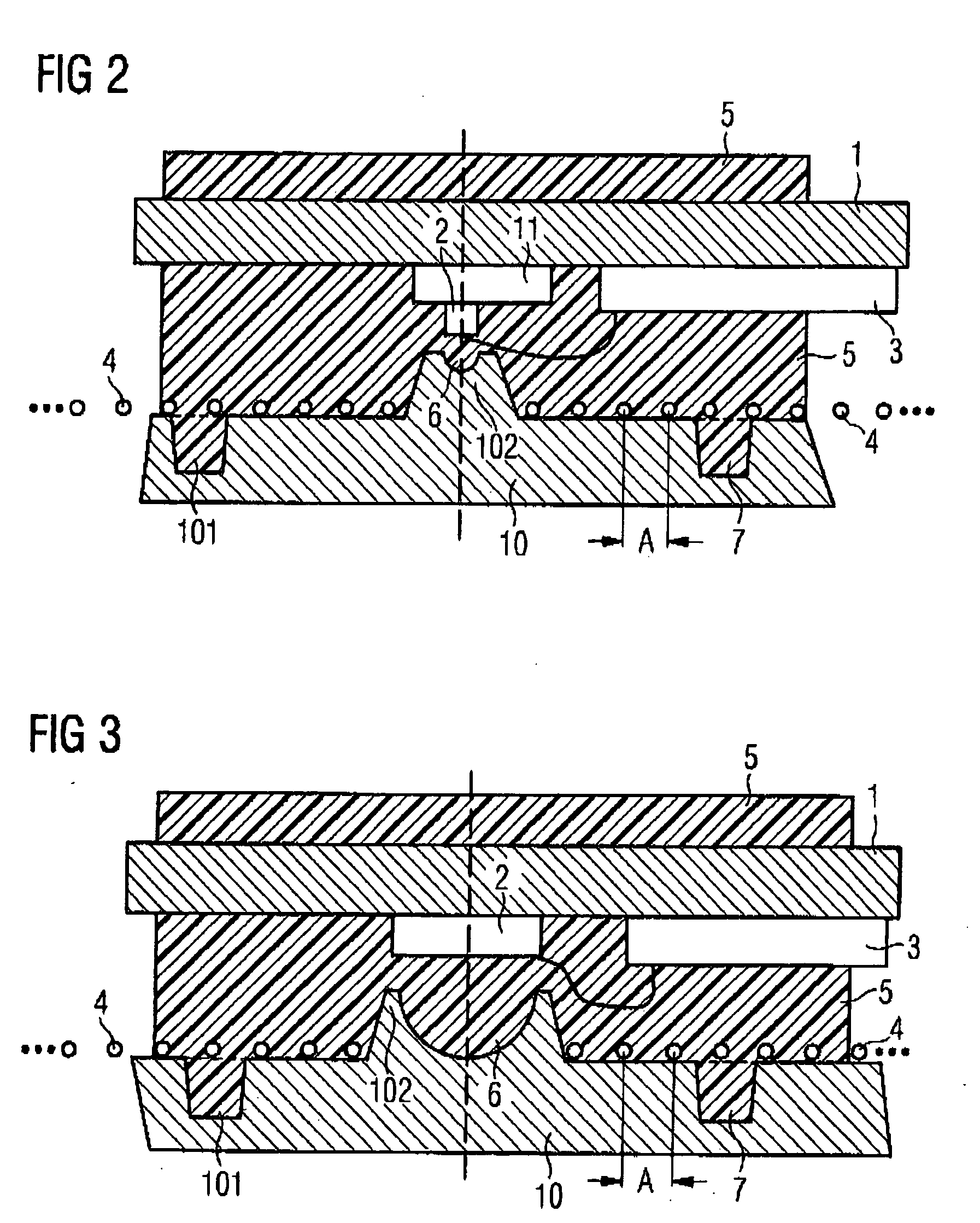Optoelectronic apparatus with a shielding cage, and methods for production of an optoelectronic apparatus with a shielding cage.
a technology of optoelectronic equipment and shielding cage, which is applied in the direction of electrical equipment, wave amplification devices, and semiconductor devices. it can solve the problems of undesirable design restrictions, complex and costly known technical solutions, and the inability to reduce the distance between the transmission module and the receiving module of the optical transceiver to the desired extent, etc., to achieve low cost and space-saving solutions. , the effect of low capacitan
- Summary
- Abstract
- Description
- Claims
- Application Information
AI Technical Summary
Benefits of technology
Problems solved by technology
Method used
Image
Examples
Embodiment Construction
[0028] In order to assist understanding of the invention, the initial situation to which the invention relates will first of all be described with reference to FIGS. 4a and 4b.
[0029] As is shown in FIGS. 4a and 4b a receiving component 2 (which is in the form of a photodiode chip) and an electrical component 3 (which is associated with it) and is, for example a preamplifier IC, are arranged on a leadframe. The leadframe has a number of pins 1-1, 1-2, 1-3, 1-4, 1-5. The operating voltage VCC is provided via the pin 1-1, the ground contact via the pin 1-2, the signal SD (SD=Signal Detect) via the pin 1-3, and the differential received signal RD+, RD− via the pins 1-4 and 1-5.
[0030] The ground pin 1-2, which is also referred to as the ground lead 1-2, branches to a contact surface 1-28 for the components 2, 3 which are arranged on the leadframe 1, and to a large number of ground arms 1-21, 1-22, 1-23, 1-24, 1-25, 1-26, 1-27.
[0031] Contact is made with the photodiode chip 2 and with ...
PUM
| Property | Measurement | Unit |
|---|---|---|
| Diameter | aaaaa | aaaaa |
| Width | aaaaa | aaaaa |
| Width | aaaaa | aaaaa |
Abstract
Description
Claims
Application Information
 Login to View More
Login to View More - R&D
- Intellectual Property
- Life Sciences
- Materials
- Tech Scout
- Unparalleled Data Quality
- Higher Quality Content
- 60% Fewer Hallucinations
Browse by: Latest US Patents, China's latest patents, Technical Efficacy Thesaurus, Application Domain, Technology Topic, Popular Technical Reports.
© 2025 PatSnap. All rights reserved.Legal|Privacy policy|Modern Slavery Act Transparency Statement|Sitemap|About US| Contact US: help@patsnap.com



